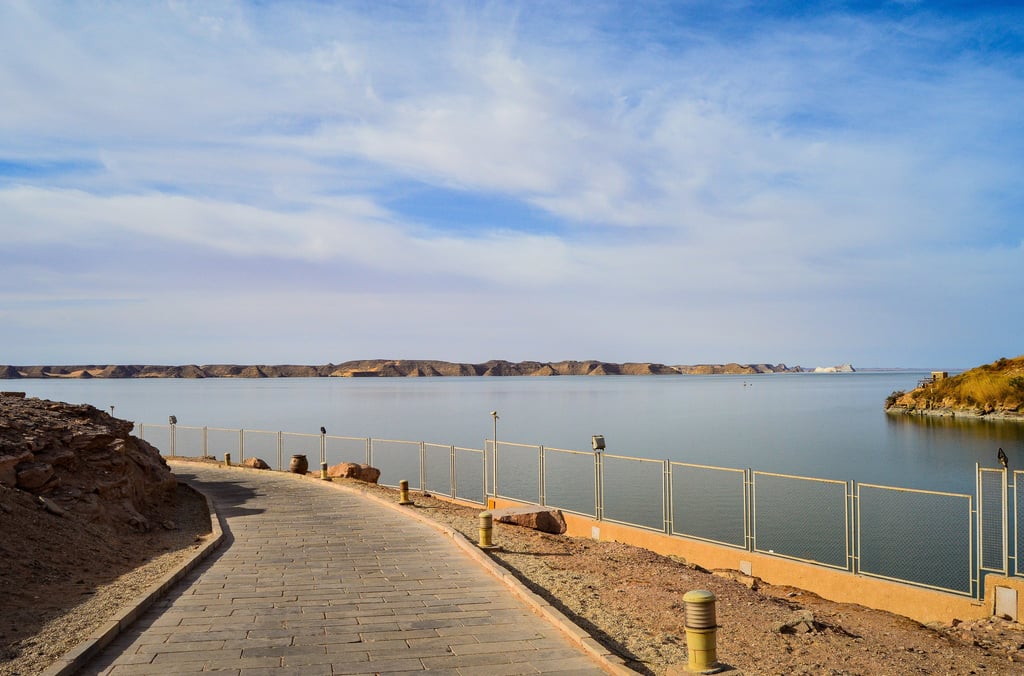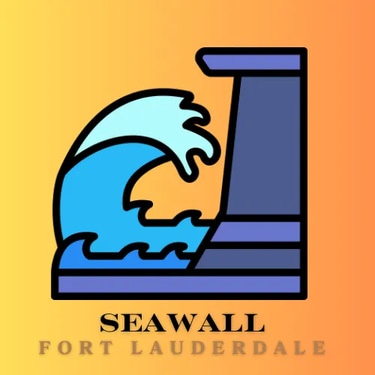Repair Your Seawall: 7 Fort Lauderdale Warning Signs to Know
Spot cracks, bulging, or erosion? These 7 seawall warning signs in Fort Lauderdale demand action now. Learn when to call a pro. Schedule your inspection today!
SEAWALL INSPECTION
8/19/20254 min read


7 Warning Signs Your Fort Lauderdale Seawall Needs Repair
Living in Fort Lauderdale means embracing coastal beauty—but also defending your property against the constant assault of tides, waves, and storms. One of the most crucial lines of defense for waterfront properties is a well-maintained seawall. But how do you know when your seawall is starting to fail?
Recognizing early seawall warning signs Fort Lauderdale homeowners often miss can be the difference between a simple seawall repair and a costly reconstruction. In this guide, we outline the top 7 signs your seawall needs immediate attention, what causes them, and when it’s time to call a professional.
1. Cracks in the Seawall Cap
One of the first visible signs of seawall deterioration is cracking in the seawall cap—the concrete top portion of the wall that holds everything together.
Why It Matters:
The cap provides structural integrity and connects tie rods or dead men anchors that stabilize the wall. When cracks appear, they often signal deeper movement or pressure behind the wall.
What to Look For:
Hairline or wide cracks across the surface
Sections that appear lifted or separated
Rust stains from rebar exposure
If not addressed, water can infiltrate the cracks, expand them, and eventually compromise the wall entirely.
2. Bulging Seawall
A bulging or bowed seawall is a serious red flag indicating that hydrostatic pressure or soil movement behind the wall is pushing it outward.
Why It Happens:
Poor drainage allowing water to accumulate behind the wall
Loss of backfill or soil support
Aging materials under constant stress
The Risk:
A bulging seawall is a sign of imminent failure. Once the wall loses its ability to resist pressure, collapse can happen suddenly posing danger to nearby structures and people.
3. Voids or Sinkholes Behind the Wall
Voids and sinkholes often form silently but signal active erosion behind your seawall. You might notice patches of grass caving in or sudden holes near the edge of the property.
What Causes Them:
Water seeping through cracks or seams
Inadequate backfill compaction
Underground water channels forming after heavy rain
Ignoring these signs can lead to dangerous soil instability and increased damage with every passing tide or storm surge.
4. Erosion Around the Wall Base
Erosion at the waterline or land side of your seawall is another urgent warning that the wall isn’t properly retaining soil or resisting wave action.
Key Signs:
Exposed foundation or rebar
Washed-out areas along the wall’s edge
Muddy or cloudy water near the wall after rain
This type of erosion often leads to soil undermining, where the land above becomes unsupported and collapses.
5. Visible Soil Undermining
Soil undermining happens when the material beneath the wall is washed away over time, creating a hollow or unstable base.
What to Look For:
Gaps between the seawall and the soil line
Sagging or leaning landscape features near the wall
Sections of the yard that feel soft or sunken
Unchecked, this issue compromises the wall’s ability to bear loads and resist pressure—especially during storms.
6. Rust Staining and Corroded Tie Rods
Tie rods and anchors buried within the seawall provide essential support. When these steel elements rust and corrode, the structure loses strength.
Warning Indicators:
Orange or brown streaks down the face of the wall
Surface spalling (flaking concrete) from rebar corrosion
Anchoring plates pulling away from the cap
Rusting components are often invisible until they’ve already weakened the structure—so any sign of corrosion should prompt an inspection.
7. Pooling Water or Poor Drainage
Seawalls must allow water to drain properly. When drainage fails, water accumulates behind the wall and creates intense pressure.
Signs of Poor Drainage:
Standing water near the wall after rainfall
Water spurting from weep holes
Mold or mildew around the base
In Fort Lauderdale’s wet and storm-prone climate, proper drainage is not optional. It’s a fundamental component of seawall safety.
When to Call a Professional
Homeowners often wonder when to escalate from watching warning signs to calling a contractor. Here are some guidelines:
If you spot two or more signs simultaneously, don’t delay—call an expert.
Any visible bulging or sinkhole activity demands immediate action.
If your seawall is over 20 years old, it should be inspected every year.
After hurricanes or king tides, a visual inspection is essential.
Professional seawall contractors can use sonar testing, ground-penetrating radar, and soil boredom to assess unseen problems.
Preventative Tips to Avoid Seawall Failure
While some seawall problems are unavoidable, regular seawall maintenance can extend the lifespan of your wall by decades. Here’s how:
Schedule annual inspections and post-storm checks
Keep weep holes and drainage paths clear
Don’t allow heavy vehicles near the edge of the seawall
Install filter fabric behind the wall to retain soil
Trim landscaping that adds pressure to the wall
Long-Term Coastal Defense: Be Proactive, Not Reactive
Fort Lauderdale’s seawalls face intense exposure from saltwater, tides, and hurricanes. By identifying seawall warning signs Fort Lauderdale residents often overlook, you’re taking a proactive step to preserve your waterfront property.
Letting small problems linger almost always leads to bigger expenses. Addressing minor cracks, erosion, or soil loss early can save thousands in reconstruction costs—and help avoid total wall failure.
Final Thoughts
The ocean is beautiful—but also relentless. If you live near the water, maintaining your seawall is just as important as maintaining your roof or foundation. Cracks, erosion, sinkholes, or rust might seem minor, but they are often the first whispers of structural failure.
By understanding these 7 key seawall warning signs Fort Lauderdale property owners face, and by knowing when to bring in a professional, you protect your home, your investment, and your peace of mind.
FAQ’s
1. How often should my seawall be inspected?
Most seawalls in Fort Lauderdale should be inspected annually, and after major storms or hurricanes.
2. What’s the average lifespan of a seawall?
With proper maintenance, concrete seawalls typically last 30–50 years. Vinyl or composite materials may last longer but still require regular checks.
3. Can I repair the seawall myself?
Small cracks or drainage clogs might be DIY-friendly, but issues like bulging, sinkholes, or structural erosion require professional assessment and equipment.
4. What permits are needed for seawall repair in Fort Lauderdale?
Depending on the repair scope, you may need city, county, and environmental permits. A licensed marine contractor can guide you through the process.
5. Is seawall damage covered by insurance?
In some cases, yes—especially if caused by a sudden event. However, long-term neglect or wear may not be covered. Check with your provider.
Search
Is your seawall secure?
Don't wait for a small problem to become a disaster. Get a professional evaluation.
Innovation
Renovating seawalls with modern technology and materials.
Quality
Strength
© 2024. All rights reserved.
